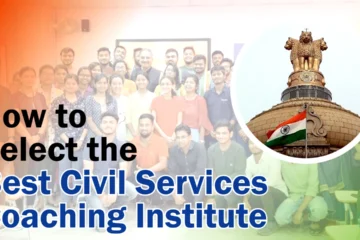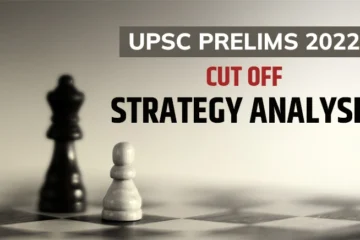How to Write Good Answers for UPSC IAS Mains Exam?
In the UPSC IAS Mains exam the examiner tests the candidate’s knowledge and
comprehension. Further it is evaluated whether the candidate can articulate his/her thoughts
effectively or not. So, the success of an aspirant in UPSC Mains depends on her capacity to
produce high-quality answers. Here, APTI PLUS will be sharing valuable answer writing tips
and strategies with you. Our aim is to you help you in writing good UPSC Mains answers so
that you can crack the exam with flying colours.
Important to Understand the Expectations of the Examiner
Firstly, it is essential to understand the expectation of the examiners. What exactly are they
looking for in your answer? Let’s find out:
Knowledge: Examiners evaluate the depth of your knowledge and understanding of a
particular topic/domain on which the question is based.
Analysis: Your ability to break down complex issues and analyze the issue in easy simple
language.
Evaluation: Your capacity to assess the merits and demerits of different arguments and
perspectives provided by various stakeholders of the issue- Government, public, independent
bodies etc.
Expression: They check the clarity of your thoughts. Examiners try to assess how organized
your thoughts are when you are writing the answer.
Relevance: It is also checked whether your answer addresses the specific question that has
been asked or you are beating around the bush.
PYQs: Your Secret Weapon for Success in UPSC IAS Mains Exam
This has been observed that aspirants often overlook the Previous Year Questions (PYQs)
when they are preparing for the UPSC Mains Exam. But the previous years’ questions could
be a game-changer in this journey of UPSC. PYQs offer a unique window into the minds of the
examiners. PYQs reveal the patterns, trends, thought process and expectations that the
examiners have from your answers in the Mains Exam.
PYQs are essential: What are the reasons?
They help in understanding the exam pattern and structure:
PYQs basically familiarize aspirants with the format of the exam. They help in understanding
the types of questions that are asked. By analyzing past papers, you can identify themes that
are asked again and again. Many topics have been asked multiple times: Broad themes
include: Women Empowerment, Child Labour, Buddhism, Governance so on and so forth.
Decoding the expectations of the Examiner:
PYQs act as a Database and analysing that Database can help you in decoding the thought
process of the Examiners over these years. There are a lot of things that are in common in the
thought process of these examiners over these years. Example: UPSC asks questions on broad
themes like Corruption, Governance, Women Empowerment, Plastic problem, Major
amendment, status of things like prisons, judiciary, governance, public infrastructure so on
and so forth. It basically asks umbrella topics. You can learn from the PYQs on what kind of
answers examiners value and what are the mistakes that aspirants need to avoid. One you
decode these expectations you can frame your answers in a manner that can impress the
examiners.
Helps in identifying gaps in Knowledge
Aspirants need to practice PYQs so that they can identify where are they going wrong. It’s our
mistakes that help us in learning from them and doing better. Solving PYQs will help aspirants
in detecting their weak areas and next they can focus on studies more effectively and fill in
those gaps. Once apsirants fix these weak areas it will boost their confidence of and will
improve their overall performance.
Helps in developing time management skills:
Writing a Mains answer in seven and a half minutes is one of the greatest challenges. Once
we practice PYQs we develop an effective time management strategy for the exam. It
important to simulate the exam conditions. This way we can allocate our time wisely
depending upon the question that has been asked and avoid running out of time.
Helps in Improving Answer Writing Skills:
Previous Years Questions means we have access to the exact answers that were written by the
Toppers in a particular year. By analysing the answers of toppers aspirants can chalk out a
perfect criterion for good answers. Aspirants can refine their writing style and structure
accordingly.
How to utilize the PYQs in the best way?
Start Early:
It’s important to start practicing the PYQs as early as possible. Toppers like Artika Shukla
Ma’am, reiterated that she took two months of time to analyse and practice PYQs even before
she started with her main preparation for the exam. So, give yourself ample time to analyse
and learn from previous years questions. The more you practice the better you will become
at understanding the demand of this examination.
Analyze Answers:
Just attempting the PYQs won’t suffice. Analyze the answers written by toppers or experts.
Pay attention to the structure, clarity, and depth of the answers written by them. Incorporate
those patterns in your muscle memory by mimicking them so that you can develop you own
pattern and style of writing answers that will meet the demand of the exam. Focus on the
keywords, key facts they are using whole writing answers.
Practice Regularly:
Previous Years Questions should act like a guide book for you throughout the journey of this
examination. Please remember that it is not a “done and dusted” thing. Make PYQs a regular
part of your study routine. You have to set aside time each and every day to practice questions
from previous years.
Seek Feedback and learn from them:
Get your answers reviewed by mentors or peers to identify areas that need improvement.
Constructive feedback by mentors at APTI PLUS Academy for example can help you refine your
approach and write better answers.
Remember: PYQs are not just a tool for practice they are a valuable asset that can significantly
increase your chances of success in the UPSC IAS Mains exam. By understanding the
importance of PYQs and utilizing them effectively, you can gain a competitive edge and
increase your confidence.
Key Strategies for Effective Answer Writing
Read the Question Carefully:
It of utmost importance that you understand the keywords and their implications. Identify the
specific demands of the question:
Examples:
Critically examine
Evaluate
Discuss
Analyze
Critically analyze
Comment
Explain
Elucidate
Examine
Illustrate
Justify
Assess
Review
Highlight
Compare and contrast
Describe
Define
Trace
Outline
Differentiate
etc…
Without understanding the demand of the above terms and writing answers would be like
“Shooting in the Dark”.
Here is the meaning of some of the above terms:
Discuss:
Giving both the sides of the story and conclude with positive or negative.
Ex: Discuss the rationale for introducing GST in India?(CSE 2013 GS 3)
Explain:
Bring out things clearly…. as if the examiner does not know what it is….
Ex: Explain what is demographic dividend.
Comment:
This is the space for your opinion… you can comment negatively/positively and conclude
accordingly.
Ex: RTE has not lived upto its expectations. Comment.
Examine:
Assume the examiner knows the issue. But he wants you to dig the issue deeply and bring out
other perspectives to light. Here the examiner is looking for unique points other than the
normal.
Ex: Examine the reasons for sustained CAD in the country.
Critically examine:
Assume the examiner knows the issue.. But he wants u to dig the issue deeply and criticise
constructively and bring out the issues/perspectives to light and critically comment on it.
(Gaalifying the media and the govt, like how can it neglect such an important problem).
Ex: Critically examine the role of Centrally sponsored schemes in fighting the malaise of
malnutrition in the country.
Evaluate/Analyse:
Give the pros and cons and say which weighs more according to you.
Ex: Analyse the pros and cons of Deep sea Mining .
Critically Evaluate/Critically evaluate:
Give the pros and cons and say why the negative weighs more than the positive.
Ex: FDI in retail is a must for the modernization of retail sector in India. Critically evaluate.
Enumerate/outline:
List out….
Enumerate the reasons for recurrent drought in the Bundelkhand region in India.
These words though appear the same, they have their own relevance. Understanding them
properly is the key to success in the examination.
Planning and proper brainstorming:
Don’t start writing the answer straightaway. Take some time to brainstorm key points and
arguments related to a particular topic. Organize your thoughts into a logical structure to give
it a flow (e.g., introduction, body paragraphs, conclusion). Create a brief outline to guide your
writing.
Write a solid introduction:
Example: Engage the examiner with a thought-provoking statement or question. Clearly state
your main argument instead of beating around the bush.
Develop Coherent Body Paragraphs:
Each paragraph should focus on a single main idea. But new paragraphs should not start
abruptly. Use transition words and phrases to connect your ideas smoothly across these
paragraphs. Use subheadings to introduce the main idea of each paragraph. Provide evidence
and examples to support your arguments. Substantiate whatever you are stating. These could
be through official reports, data, facts, figures, committee findings and recommendations.
Give solutions and write a good Conclusion:
You are going to be a policy maker who will be working as a part of the Government. So, it is
importantto have a positive outlook on things, be hopeful and give concrete solutions to these
issues. So, give a way forward and write a good conclusion. Offer a final thought, insight and
a hopeful way forward that leaves a lasting impression.
Use Clear and Concise Language:
There is no need to use jargon and overly complex language as UPSC is not an English
Literature/Compression Examination. Use simple, direct sentences that convey your ideas
clearly. Change your sentence structure to maintain interest.
Cite Evidence and Sources:
Support your arguments with relevant facts, figures, quotes, and examples. Cite your sources
appropriately example: Government Report name, Committee recommendation, report
published by Government body etc.
Practice Regularly:
The more you practice writing answers, the better you will become. Set aside time each day
to write practice answers on a variety of topics from various subjects. Get feedback from
mentors or peers for example at APTI PLUS Academy-the best UPSC Coaching in Kolkata to
identify areas for improvement.
Incorporte different perspectives in your answer:
Incorporate perspectives from various stakeholders to demonstrate a comprehensive
understanding. Address potential counterarguments to give a balanced final thought to
strengthen your own position.
Case studies:
Use real-world examples to illustrate your points and make your arguments more concrete.
Proper use of Analytical Tools
SWOT analysis: Evaluate the strengths, weaknesses, opportunities, way ahead of a particular
issue or policy.
PEST analysis: Analyze the political, economic, social, and technological factors influencing a
situation.
Cost-benefit analysis: Weigh the costs and benefits of different options to make informed
decisions at the end.
Using Visual Aids:
Example: Diagrams and charts, Maps, Tables.
Common Mistakes to Avoid
Answering something that has not been asked in the question: Ensure you address exactly
what has been asked in the Question.
Lack of structure: Organize your thoughts logically and use clear transitions to maintain flow
in content.
Overgeneralization: Avoid making broad statements without supporting evidence like Report,
Data, statistics etc.
Redundancy: Avoid repeating the same points multiple times. This can affect your final score.
Maintain a positive mindset: Approach the exam with confidence and a growth mindset.
By following the guidelines mentioned above and practicing regularly, you can significantly
improve your ability to write good answers for UPSC IAS Mains exam. Remember that the key
to success lies in understanding the expectations of the examiner, planning effectively and
expressing your ideas clearly.





